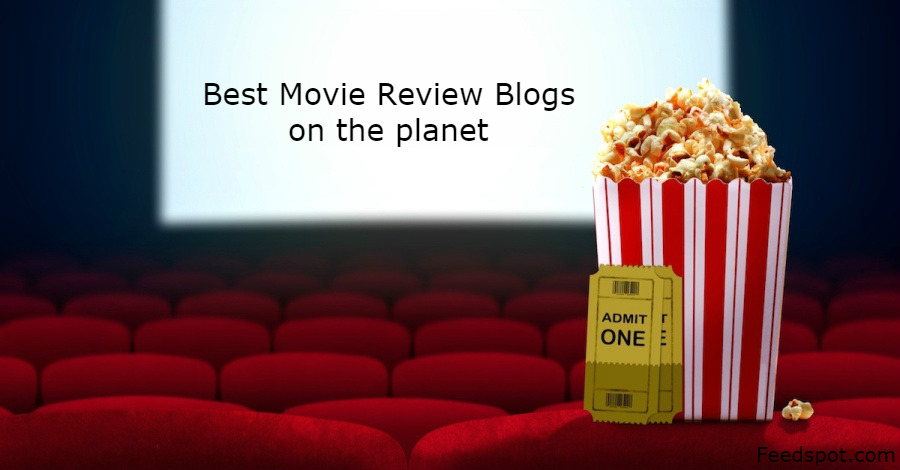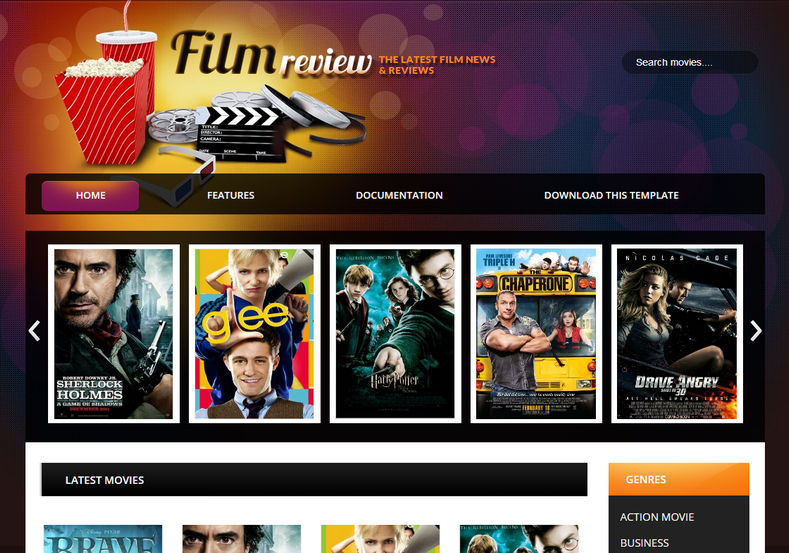Monetization Strategies

So, you’ve built a fantastic movie review blog, brimming with insightful critiques and witty puns (hopefully). Now comes the crucial question: how do you turn all that cinematic expertise into cold, hard cash? Fear not, aspiring film critics, for the path to profitability is paved with (well-chosen) ads and savvy strategies. Let’s explore some options to monetize your cinematic kingdom.
Affiliate Marketing
Affiliate marketing involves partnering with companies selling movie-related products (think streaming services, Blu-rays, merchandise) and earning a commission on sales generated through your unique affiliate links. Imagine recommending a must-have Criterion Collection Blu-ray and earning a cut of the sale! This strategy leverages your existing audience’s trust in your recommendations.
Implementation Steps:
- Join relevant affiliate programs (e.g., Amazon Associates, various streaming services’ affiliate programs).
- Strategically integrate affiliate links within your reviews and blog posts. Be transparent about your affiliate relationships; full disclosure is key to maintaining reader trust.
- Track your affiliate links’ performance using analytics tools provided by the affiliate programs to optimize your strategy.
Potential Income and Effort: Income potential is variable, depending on the number of clicks and conversions. Effort involves finding suitable affiliate programs, integrating links naturally into content, and tracking performance. It’s a relatively low-effort, high-reward strategy if you have a large, engaged audience.
Ethical Considerations: Always disclose affiliate relationships transparently. Avoid pushing products that you wouldn’t genuinely recommend. Focus on providing value to your readers; affiliate links should complement, not dominate, your content.
Display Advertising
Display advertising involves placing ads (banners, text ads) on your blog. This is a classic monetization method, straightforward to implement but can be less lucrative per click compared to affiliate marketing if not done correctly. Platforms like Google AdSense automate the process, matching your blog’s content with relevant ads.
Implementation Steps:
- Sign up for an ad network (e.g., Google AdSense).
- Follow the network’s guidelines for ad placement to ensure optimal performance and avoid ad blindness.
- Monitor your ad performance regularly and adjust ad placement or ad network as needed to maximize revenue.
Potential Income and Effort: Income is based on impressions (views) and clicks. Effort is relatively low, requiring minimal setup and ongoing management. However, generating significant income may require a substantial amount of traffic.
Ethical Considerations: Choose an ad network with a strong reputation for avoiding intrusive or misleading ads. Ensure that ads are relevant to your content and audience to avoid alienating readers.
Subscription Model
A subscription model offers exclusive content (e.g., early access to reviews, bonus features, ad-free experience) to paying subscribers. This requires building a loyal readership that values your content enough to pay for premium access.
Implementation Steps:
- Choose a subscription platform (e.g., Patreon, Substack).
- Define your subscription tiers and the benefits offered at each level.
- Promote your subscription offering clearly on your blog and social media.
Potential Income and Effort: Income potential is high with a large subscriber base, but building that base requires significant effort. It also requires creating valuable, exclusive content to justify the subscription cost.
Ethical Considerations: Be transparent about what subscribers will receive for their money. Deliver on your promises consistently to maintain subscriber satisfaction and avoid negative reviews. Consider offering a free tier to attract potential subscribers.
Community Engagement

Building a thriving community around your movie review blog isn’t just about getting views; it’s about fostering a passionate group of film fanatics who eagerly await your next insightful (and hopefully hilarious) critique. Think of it as creating your own little cinematic cult – but with less robes and more popcorn.
Movie review blog – Engaging your audience effectively will not only boost your blog’s visibility but also create a sense of loyalty and belonging. A strong community can provide invaluable feedback, contribute to content ideas, and even help spread the word about your amazing work. Essentially, they become your army of movie-loving minions (in the best possible way, of course!).
Five Ways to Engage Blog Audience
These aren’t just suggestions; they’re the secret weapons in your arsenal for conquering the cinematic internet. Use them wisely, and your blog will become the digital equivalent of a sold-out premiere.
- Social Media Interaction: Respond to comments, share snippets of reviews, run polls about upcoming movies, and host Q&A sessions. Think of it as a virtual meet-and-greet with your audience, minus the awkward small talk.
- Comment Section Engagement: Don’t just let the comments sit there like lonely tumbleweeds. Respond to every comment, even the ones that disagree with you (politely, of course!). It shows you value your readers’ opinions, even the slightly misguided ones.
- Email Newsletters: Regular newsletters keep your audience informed about new reviews, exclusive content, and behind-the-scenes glimpses into your movie-watching life. Think of it as your own personal cinematic newsletter, delivered straight to their inbox.
- Interactive Content: Incorporate quizzes, polls, and “best of” lists to encourage participation and discussion. It’s like a fun, movie-themed party in your blog’s comment section.
- Guest Blogging and Collaboration: Invite other film bloggers or critics to contribute to your blog. This expands your reach and introduces your audience to new perspectives and voices. It’s a cinematic potluck, where everyone brings their favorite dish (movie opinions).
Social Media Strategy
Choosing the right social media platforms is crucial. It’s about picking the battlegrounds where your audience is most likely to be found, armed with popcorn and ready to engage.
A good strategy would involve utilizing platforms like Twitter for quick updates and engaging in real-time movie discussions, Instagram for visually appealing posts (think stills from movies or behind-the-scenes shots of your movie-watching setup), and Facebook for building a more engaged community through longer posts and discussions. Consider using YouTube for video reviews or short commentary pieces, adding a more dynamic dimension to your content.
Building a Loyal Community, Movie review blog
Creating a loyal community requires more than just posting reviews; it’s about building relationships with your audience. It’s about creating a space where people feel comfortable sharing their thoughts, engaging in discussions, and feeling like they’re part of something special. Think of it as building a virtual film club, but with way more witty banter.
Consistency is key. Regular posting, responding to comments, and creating engaging content are all essential steps in building a loyal following. Running contests or giveaways can also help boost engagement and create a sense of community. Consider creating a private Facebook group or a Discord server for more in-depth discussions and exclusive content.
Handling Negative Comments Constructively
Not everyone will love your reviews, and that’s okay. The key is to handle criticism gracefully and professionally. Remember, a little negativity can actually be beneficial – it provides an opportunity to engage with dissenting viewpoints and potentially improve your work.
Respond to negative comments with empathy and respect, even if you disagree with the criticism. Acknowledge their viewpoint and explain your reasoning calmly and rationally. Avoid getting into personal attacks or engaging in flame wars. Sometimes a simple, “I appreciate your feedback, and I understand your perspective,” can go a long way. If a comment is truly abusive or violates your blog’s guidelines, don’t hesitate to delete it.
Visual Elements: Movie Review Blog

Let’s face it, a movie review without visuals is like a pizza without cheese – technically edible, but profoundly lacking in soul. Pictures, GIFs, and other visual elements aren’t just pretty additions; they’re vital tools to grab your readers’ attention and amplify your insightful (and hilarious) critiques. They’re the cinematic equivalent of adding extra sprinkles to an already delicious ice cream sundae.
Visual elements are crucial for enhancing engagement and conveying the tone and style of your review. A well-chosen image can instantly communicate more than a thousand words of descriptive prose, while a cleverly selected GIF can perfectly encapsulate a scene’s absurdity or emotional impact. Think of it as a visual shorthand, allowing readers to quickly grasp the essence of your argument. It’s the difference between reading a recipe and seeing a mouthwatering photo of the finished dish.
Custom Graphics
Custom graphics offer a unique opportunity to create visually striking representations of your movie review. Imagine a stylized portrait of the main character, reflecting the film’s overall mood – perhaps a darkly rendered figure for a thriller or a vibrant, almost cartoonish depiction for a lighthearted comedy. Alternatively, a custom graphic could be a minimalist design incorporating key symbols or imagery from the movie, creating a memorable visual summary. For example, a review of “The Shining” might feature a chillingly distorted image of the Overlook Hotel, while a review of “Moana” could showcase a bright, tropical-themed design with stylized waves and Polynesian patterns. The possibilities are as limitless as your imagination (and your graphic design skills, or your willingness to pay a talented designer!).
Screen Captures
Screen captures are your bread and butter for illustrative movie reviews. They allow you to directly showcase specific scenes, highlighting key moments of brilliance, baffling plot choices, or particularly memorable (or cringeworthy) acting. A well-chosen screen capture can serve as a visual anecdote, supporting your written commentary and providing immediate context. For instance, if you’re discussing a breathtaking action sequence, a screen capture freezing the peak of the action will amplify your description. Similarly, a poorly lit scene that you criticize can be effectively highlighted with a screen capture, letting the image speak volumes about your point. Remember to choose high-resolution captures for optimal clarity.
GIFs
Ah, the glorious GIF. The perfect blend of image and motion, the GIF is the ultimate tool for showcasing comedic timing, dramatic irony, or even just a particularly expressive facial reaction from a character. A short, well-crafted GIF can convey a whole scene’s emotional arc in a few seconds, making your review more dynamic and engaging. For example, a GIF of a character’s dramatic fall from grace could perfectly illustrate your point about their character arc, while a GIF highlighting a particularly awkward scene could provide a chuckle for your readers. Remember to keep your GIFs short, sharp, and to the point – avoid overly long or distracting loops.
Integrating Visual Elements
The key to successful integration is strategic placement. Don’t just throw images in randomly; carefully consider where each visual element will best support your text. Place them near the relevant paragraphs, acting as visual aids to enhance understanding and engagement. Use captions to provide context and further explanation. Maintain a balance – too many images can overwhelm the reader, while too few leave the review feeling visually bland. Think of it as a well-orchestrated dance between text and image, each element working in harmony to create a captivating experience.
Technical Requirements and Considerations
Optimizing visual content for web use is crucial for a smooth user experience. Use appropriately sized images to avoid slow loading times. Compress images to reduce file size without sacrificing quality. Use descriptive alt text for accessibility – this allows screen readers to convey the image’s content to visually impaired users. Ensure your images are in a widely supported format, such as JPEG or PNG. Consider using a content delivery network (CDN) to serve images from servers geographically closer to your readers, improving loading speed for a global audience. Finally, make sure your images are responsive, scaling appropriately to fit different screen sizes.